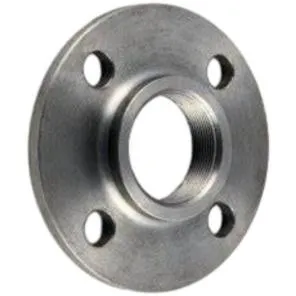-
Cangzhou Yulong Steel Co., Ltd.
-
Phone:
+86 13303177267 -
Email:
admin@ylsteelfittings.com
- English
- Arabic
- Italian
- Spanish
- Portuguese
- German
- kazakh
- Persian
- Greek
- French
- Russian
- Polish
- Thai
- Indonesian
- Vietnamese
- Zulu
- Korean
- Uzbek
- Hindi
- Serbian
- Malay
- Ukrainian
- Gujarati
- Haitian Creole
- hausa
- hawaiian
- Hebrew
- Miao
- Hungarian
- Icelandic
- igbo
- irish
- Japanese
- Javanese
- Kannada
- Khmer
- Rwandese
- Afrikaans
- Albanian
- Amharic
- Armenian
- Azerbaijani
- Basque
- Belarusian
- Bengali
- Bosnian
- Bulgarian
- Catalan
- Cebuano
- China
- China (Taiwan)
- Corsican
- Croatian
- Czech
- Danish
- Esperanto
- Estonian
- Finnish
- Frisian
- Galician
- Georgian
- Kurdish
- Kyrgyz
- Lao
- Latin
- Latvian
- Lithuanian
- Luxembourgish
- Macedonian
- Malgashi
- Malayalam
- Maltese
- Maori
- Marathi
- Mongolian
- Myanmar
- Nepali
- Norwegian
- Norwegian
- Occitan
- Pashto
- Dutch
- Punjabi
- Romanian
- Samoan
- Scottish Gaelic
- Sesotho
- Shona
- Sindhi
- Sinhala
- Slovak
- Slovenian
- Somali
- Sundanese
- Swahili
- Swedish
- Tagalog
- Tajik
- Tamil
- Tatar
- Telugu
- Turkish
- Turkmen
- Urdu
- Uighur
- Welsh
- Bantu
- Yiddish
- Yoruba

Nov . 12, 2024 15:14 Back to list
100mm flange
Understanding the 100mm Flange An Essential Component in Engineering
Flanges are critical components within various engineering applications, serving as connectors between pipes, valves, and other equipment in a piping system. Among the myriad of flange sizes and configurations, the 100mm flange holds significant importance due to its versatile applications and compatibility with international standards.
What is a 100mm Flange?
A 100mm flange refers to a flange that has a nominal diameter of 100 millimeters, which equates to approximately 4 inches. Flanges can be made from various materials including carbon steel, stainless steel, and plastic, depending on the application requirements, such as strength, corrosion resistance, and weight. The 100mm flange can be found in various standards, including American National Standards Institute (ANSI), British Standard (BS), and European Norms (EN), which dictate the flange’s design, dimensions, and tolerances.
Types of 100mm Flanges
There are several types of 100mm flanges, each serving different purposes
. Common types include1. Weld Neck Flange These flanges are designed for high-pressure applications. They have a long neck that provides a gradual transition between the flange and the pipe, reducing stress at the joint.
2. Slip-On Flange This type is placed over the pipe and then welded. It allows for easier alignment and installation, making it a popular choice for low-pressure applications.
3. Blind Flange A blind flange is used to seal the end of a piping system. It is crucial in situations where future access may be needed, as it can be easily removed.
100mm flange

4. Socket Weld Flange This flange is used for small diameter pipes and is installed by inserting the pipe into the flange socket and welding it in place. It is known for its high strength and leak-proof characteristics.
Applications of the 100mm Flange
The 100mm flange is widely used in numerous industries, including oil and gas, water treatment, power generation, and manufacturing. Its size makes it suitable for various fluid transport applications such as conveyance of water, steam, or chemical solutions. Additionally, in the construction industry, 100mm flanges are often utilized to connect different components of HVAC systems, ensuring efficient operation and ease of maintenance.
Advantages of Using 100mm Flanges
One of the primary advantages of using a 100mm flange is its adaptability across different systems. This flange size is small enough to fit in tight spaces while still allowing for high flow rates. Moreover, standardized dimensions ensure compatibility with various fittings, facilitating easier repairs and replacements.
Furthermore, the availability of different materials allows for specialized applications; for instance, using stainless steel flanges in corrosive environments enhances the system's longevity and reliability.
Conclusion
In summary, the 100mm flange is an indispensable element in modern engineering, offering a combination of strength, adaptability, and ease of maintenance. Its wide application across multiple industries underlines its importance in ensuring efficient operation in piping systems. As technology and manufacturing processes advance, the design and functionality of flanges, including the 100mm variety, will continue to evolve, further enhancing their critical role in engineering solutions.
Latest news
-
ANSI 150P SS304 SO FLANGE
NewsFeb.14,2025
-
ASTM A333GR6 STEEL PIPE
NewsJan.20,2025
-
ANSI B16.5 WELDING NECK FLANGE
NewsJan.15,2026
-
ANSI B16.5 SLIP-ON FLANGE
NewsApr.19,2024
-
SABS 1123 FLANGE
NewsJan.15,2025
-
DIN86044 PLATE FLANGE
NewsApr.19,2024
-
DIN2527 BLIND FLANGE
NewsApr.12,2024
-
JIS B2311 Butt-Welding Fittings LR/SR 45°/90° /180°Seamless/Weld
NewsApr.23,2024











